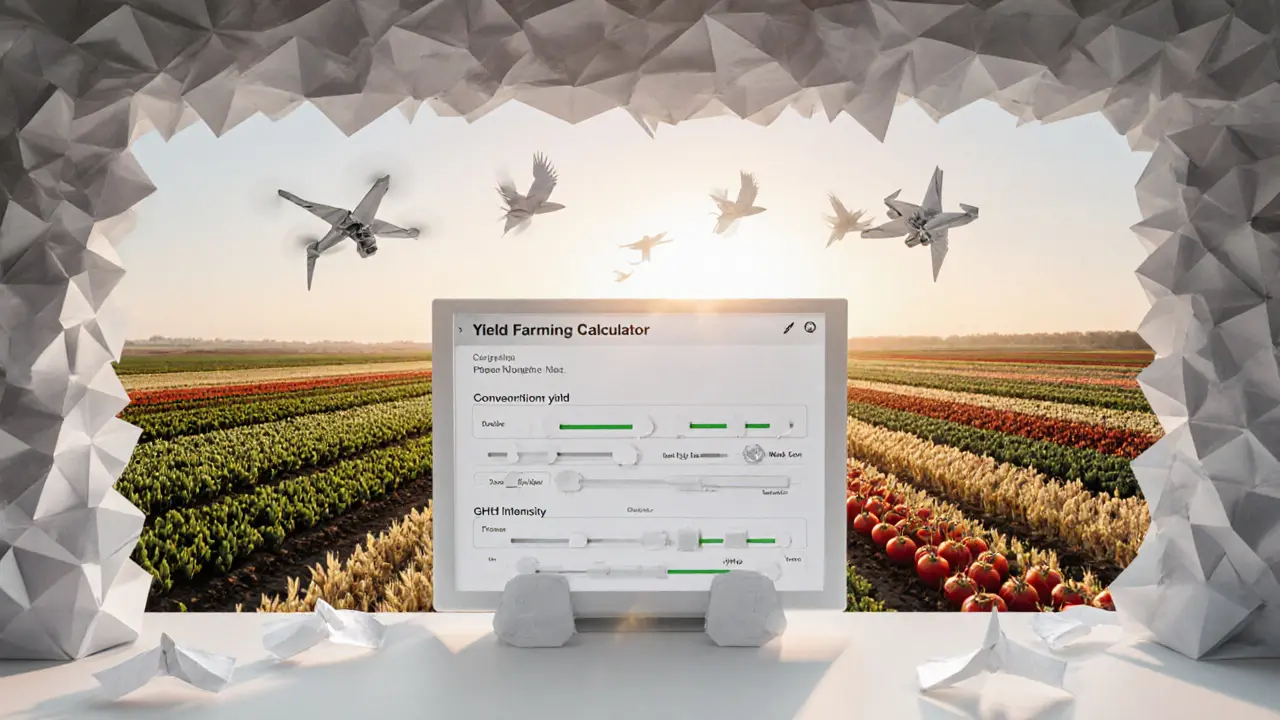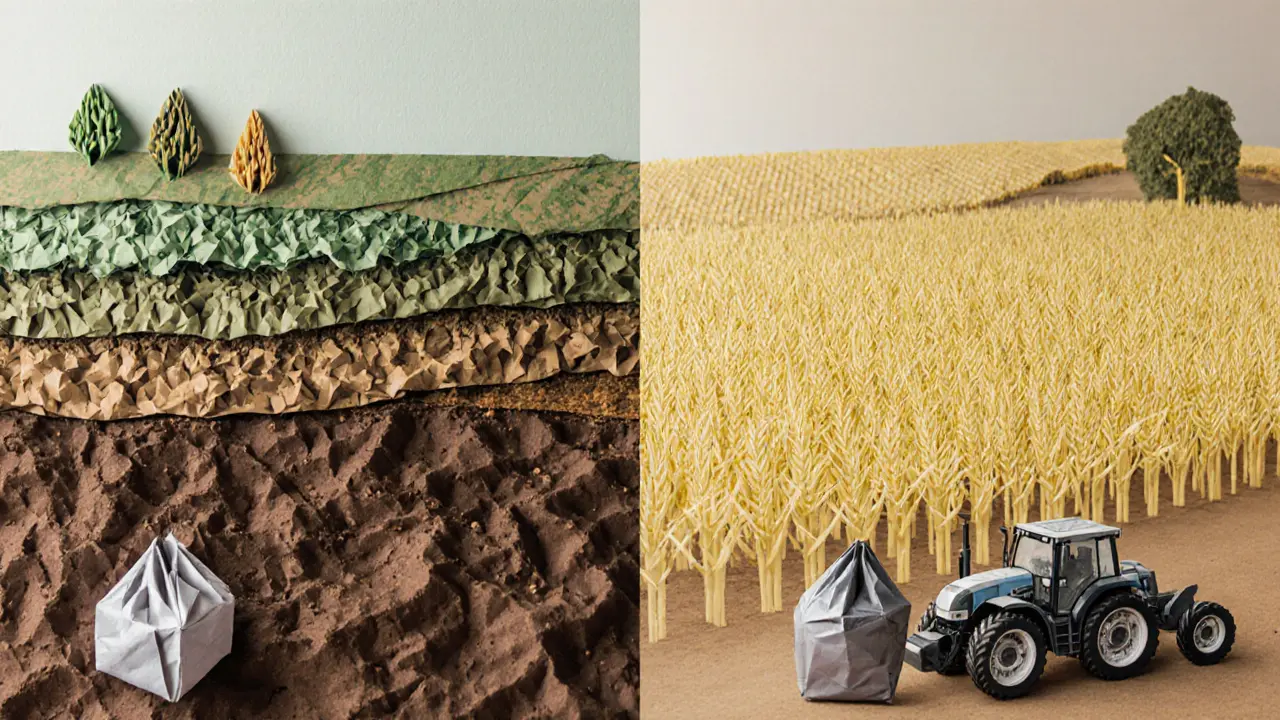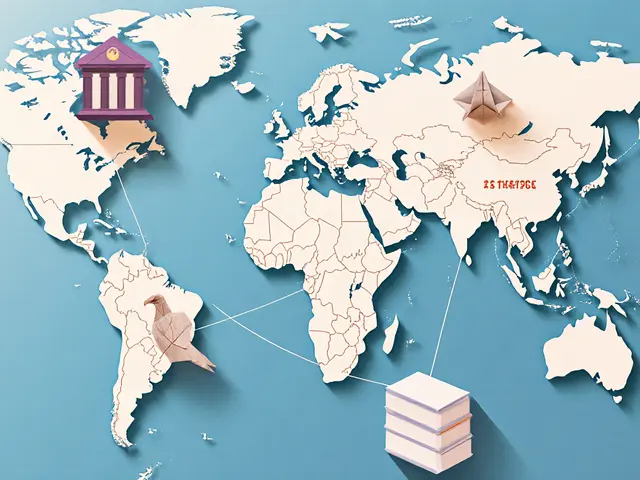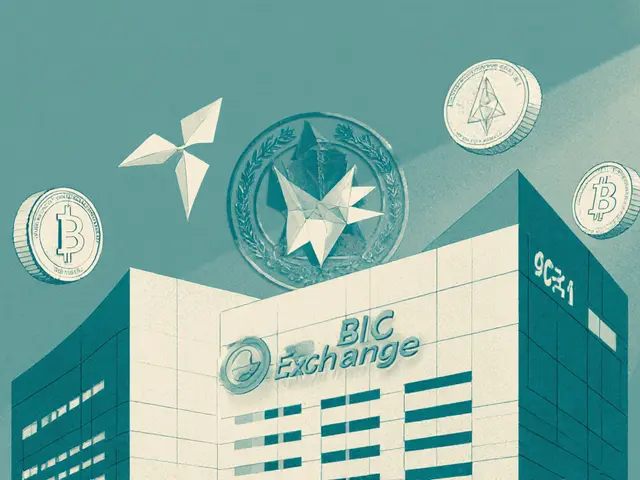Sustainable vs Unsustainable Yield Farming Calculator
Sustainable Farming
Focuses on soil health, biodiversity, and long-term productivity using regenerative practices.
- Crop rotation and multi-cropping
- Cover crops and composting
- Reduced tillage
- Precision agriculture integration
Unsustainable Farming
Prioritizes short-term yield maximization through heavy inputs and intensive practices.
- Monoculture cropping
- Heavy synthetic fertilizer use
- Intensive tillage
- High pesticide dependency
Farm Parameters
Comparison Results
Yield Gap
The difference in yield between sustainable and conventional farming:
Land Efficiency
How much more land would be needed with sustainable practices:
Environmental Impact
Comparative GHG emissions per ton of production:
Insight Summary
When sustainable practices are combined with precision agriculture, yield gaps can be minimized while improving soil health and reducing environmental impact.
When we talk about Yield Farming is a crop production approach that aims to maximize output per unit area, the debate between Sustainable Agriculture and Unsustainable (Conventional) Agriculture becomes central. Farmers, policymakers, and shoppers all want to know whether higher yields automatically mean more harm, or if it’s possible to grow a lot while keeping the planet healthy.
TL;DR
- Sustainable yield farming focuses on soil health, biodiversity, and long‑term productivity; unsustainable farming relies on high inputs to push short‑term output.
- Average yield gaps shrink when sustainable farms use diversification (crop rotation, multi‑cropping) - often down to 8‑9%.
- Per unit of food, intensive systems can have lower land use and lower greenhouse‑gas intensity, but they may still generate pollution from fertilizers.
- Economic returns improve on sustainable farms over time as soil organic matter builds up.
- Hybrid approaches that combine precision tech with regenerative practices are emerging as the most promising path.
What Is Yield Farming in Agriculture?
Yield farming is simply the practice of growing as much crop as possible on a given piece of land. It’s measured in tonnes per hectare or bushels per acre. The concept gained fame during the Green Revolution of the 1960s, when new high‑yield wheat and rice varieties, plus synthetic fertilizers, lifted global food production dramatically.
What Makes a System Sustainable?
Sustainable Agriculture strives to keep ecosystems functional while feeding people. Core attributes include:
- Maintaining or increasing Soil Organic Matter (SOM) - a key driver of nutrient cycling.
- Reducing synthetic input reliance by using compost, legumes, and cover crops.
- Promoting biodiversity through Crop Rotation and Multi‑cropping.
- Protecting water quality and limiting greenhouse‑gas emissions.
These practices aim for long‑term resilience, not just a quick harvest.
Unsustainable High‑Yield Practices
Unsustainable, or conventional, systems chase the highest possible yields by loading fields with nitrogen‑rich fertilizers, pesticides, and mechanized irrigation. The focus is on maximizing output per hectare in the short term, often at the expense of soil health and biodiversity.
Key traits include:
- Heavy reliance on synthetic nitrogen - for example, inorganic fertilizer can boost rice yields with little greenhouse‑gas penalty per tonne, according to recent field trials.
- Monoculture cropping that removes natural pest controls.
- Intensive tillage that accelerates soil erosion.
Yield Gaps - How Much Do Sustainable Systems Lag?
Meta‑analyses show organic farms (a major sustainable subset) produce about 19.2%±3.7% lower yields than conventional farms on average. However, when diversification is added, the gap shrinks dramatically:
- Multi‑cropping reduces the gap to roughly 9%±4%.
- Crop rotations bring it down to about 8%±5%.
These numbers are especially tight for high‑value vegetables and legumes. Cereals still show the widest gaps because breeding programs have focused heavily on conventional varieties since the Green Revolution.

Environmental Impact per Unit of Production
Measuring impact per tonne of food flips the usual narrative. A study of European dairy found that organic farms needed twice the land to produce the same milk volume and caused at least one‑third more soil loss. Professor Phil Garnsworthy concluded that higher milk yield per unit land generally improves both biological and economic efficiency.
Similar patterns appear in rice and wheat: intensive rows deliver more grain per hectare, which means less land conversion and often lower water use per tonne. Yet, the same intensive systems can emit more nitrous oxide if fertilizer rates are excessive. The trade‑off is clear - we need to balance land sparing with input‑related emissions.
Economic Trade‑offs
Unsustainable farms often enjoy lower labor costs and higher short‑term profits, but they also face rising input prices and stricter environmental regulations. Sustainable farms may charge premium prices for organic or regenerative labels, but they incur certification costs and sometimes face lower yields early on.
Long‑term data tells a different story. As soil organic matter builds - sometimes increasing yields by up to 58% - the cost of synthetic inputs drops, and farms become more resilient to price shocks. Over a decade, many organic operations turn profitable without relying on price premiums alone.
Hybrid Approaches - The Future of Yield Farming
Researchers now argue that the binary “sustainable vs unsustainable” is a false dilemma. The most promising farms blend:
- Precision agriculture tools (satellite imagery, AI‑driven variable‑rate application) that cut fertilizer waste.
- Regenerative practices such as cover cropping, reduced tillage, and diversified rotations that boost SOM.
Case studies from the UK and the US show that farms adopting these hybrids can match conventional yields while cutting greenhouse‑gas intensity by 20‑30%.
Quick Decision Checklist
- Do you have access to reliable soil‑health data? If yes, consider a low‑input, high‑SOM strategy.
- Is market premium for organic or regenerative products available locally? If yes, the price premium can offset early yield gaps.
- Can you invest in precision tech? Variable‑rate fertiliser can make intensive yields more environmentally friendly.
- Is land scarcity a concern in your region? High‑yield, land‑sparing approaches may be necessary.
- Do you plan for long‑term climate resilience? Diversified rotations improve drought tolerance.
Key Takeaways
The reality sits between extremes. Sustainable practices can close yield gaps when they incorporate diversification and modern technology. Unsustainable systems can be more land‑efficient but often generate other environmental costs. The sweet spot lies in hybrid models that use data‑driven inputs while rebuilding soil health.
| Aspect | Sustainable (Regenerative) | Unsustainable (Conventional) |
|---|---|---|
| Typical Yield Gap | 8‑9% lower (with rotation/multi‑cropping) | Baseline |
| Soil Organic Matter Trend | Increases 10‑58% over 10yr | Declines or stays flat |
| Land Use per Unit Food | Higher (land‑intensive) | Lower (land‑sparing) |
| Greenhouse‑Gas per tonne | Variable - can be higher if fertilizer over‑used | Often lower per tonne, but can spike with excess N |
| Economic Outlook (10yr) | Profit grows with SOM, premiums | Short‑term profit, higher input costs |
| Tech Adoption | Increasing - precision, AI, remote sensing | Established - mechanization, synthetic inputs |
Frequently Asked Questions
Can sustainable farms ever match conventional yields?
Yes, especially when they use crop rotations, multi‑cropping, and precision‑ag inputs. Studies show the gap can shrink to under 10% for many crops, and in some cases, high‑tech regenerative farms have matched conventional yields.
Why do some research papers claim organic farming uses more land?
Organic yields are typically lower per hectare, so more area is needed to produce the same amount of food. This is the core of the land‑sparing debate. However, if organic farms improve soil health, their yields can rise, reducing the land penalty.
Are there subsidies that favor unsustainable practices?
Many governments still subsidize nitrogen fertilizer and pesticide use, which lowers the cost of conventional production. New policy drafts are starting to reward carbon‑sequestration and biodiversity, which could tilt the scale toward sustainable methods.
How does precision agriculture fit into sustainability?
Precision tools deliver nutrients only where needed, cutting excess runoff and reducing nitrous‑oxide emissions. When combined with healthy soils, they help achieve high yields with a lighter environmental footprint.
What’s the best first step for a farmer wanting to transition?
Start with a soil health audit. Identify nutrient deficits, then introduce a cover‑crop or rotation that adds organic matter while reducing synthetic input dependence.





Marie Salcedo
Great overview! Sustainable practices like crop rotation and cover crops really set the stage for healthier soils and steady yields.
Noel Lees
Totally agree 😎, but let’s not forget that without the right tech, those practices can still lag behind conventional output.
Raphael Tomasetti
From an ag‑tech perspective, integrating variable‑rate fertilization with regenerative tillage creates a synergistic yield boost while curbing N₂O emissions.
Jenny Simpson
Hold up! The whole “sustainable wins” narrative glosses over the reality that half the world still needs cheap, high‑output food now.
Sabrina Qureshi
Wow!!! The data is crystal clear!!! Sustainable methods are amazing!!! But the pressure from market forces? Absolutely brutal!!!
Janelle Hansford
Jenny, you raise a valid point-balancing immediate food security with long‑term stewardship is tough, yet many farmers are finding win‑win pathways through hybrid models.
dennis shiner
Sure, just switch everything overnight and the planet will be fine.
Maggie Ruland
Right, because everyone has a multi‑cropping plan and a drone fleet sitting in the barn.
Joyce Welu Johnson
When transitioning, start small: plant a cover crop on a single field, monitor soil organic matter, and use that data to gradually expand. The incremental gains in moisture retention and nutrient cycling can be surprisingly fast, often noticeable within a single growing season.
Ally Woods
Honestly, all this talk feels like academic fluff-just give us the cheap fertilizer and let us feed the world.
Kristen Rws
Im not sayin we should abandon all conventionl methods but adding a lil bit of regnerative practice can help long term.
Fionnbharr Davies
It’s worth remembering that agriculture is as much a cultural system as an economic one; fostering community‑based seed exchanges can reinforce biodiversity while also preserving local knowledge that underpins resilient cropping strategies.
Narender Kumar
Esteemed colleagues, the discourse surrounding sustainable versus unsustainable yield farming demands a meticulous examination of agronomic, ecological, and socioeconomic dimensions.
First, the principle of soil health preservation is anchored in the augmentation of organic matter through practices such as cover cropping and reduced tillage.
Empirical studies have demonstrated that a modest increase of 10 percent in soil organic carbon can elevate water infiltration rates, thereby enhancing drought resilience.
Conversely, conventional intensive systems, while achieving higher immediate yields, frequently engender deleterious effects including nitrogen leaching and heightened greenhouse‑gas emissions.
The paradox of land‑sparing versus land‑intensification lies at the heart of policy deliberations, where the former aspires to minimize agricultural footprint, whereas the latter seeks to maximize output per hectare.
In regions where arable land is scarce, the latter approach may appear indispensable, yet it imposes a substantial environmental externality.
Technological interventions, notably precision agriculture, offer a promising conduit to reconcile these conflicting objectives.
Variable‑rate application of fertilizers, guided by satellite‑derived vegetation indices, can reduce nitrogen use efficiency gaps by up to thirty percent.
When such data‑driven inputs are coupled with regenerative practices, the resultant system exhibits both high productivity and reduced ecological impact.
Economic analyses reveal that the initial capital outlay for precision equipment is often offset within three to five years through savings on inputs and premium market prices for sustainably produced commodities.
Moreover, the social dimension should not be overlooked; farmer education and participatory research foster adoption and ensure contextual relevance.
Policy frameworks must therefore incentivize the integration of technology and ecology rather than privileging one in isolation.
Subsidies for synthetic fertilizers, for instance, could be restructured to support the acquisition of sensor networks and soil health monitoring tools.
Such a holistic approach aligns with the United Nations Sustainable Development Goals, particularly those pertaining to zero hunger, climate action, and responsible consumption.
In summation, the path forward is neither exclusively conventional nor wholly utopian; it is a calibrated synthesis of science, stewardship, and socioeconomic equity.
Anurag Sinha
Everyone forgets that big agro‑chemical giants pull the strings, funding research that downplays the true cost of nitrogen runoff while pushing miracle yield promises.
Raj Dixit
It is our moral duty to transition now; ignoring soil degradation is tantamount to betraying future generations.
Darrin Budzak
I’m all for trying hybrid methods-it seems like a balanced way to keep yields up while giving the soil a break.
Andrew McDonald
While lay discussions flit between buzzwords, the real advancement resides in integrating agronomic modeling with long‑term carbon sequestration pathways.
Enya Van der most
Let’s charge ahead! A simple step like adding a winter cover crop can spark a cascade of benefits for both yield and ecosystem health.
Eugene Myazin
Mixing precision tech with a few good old cover crops is the sweet spot-keeps the profit margins healthy and the planet happier.
karyn brown
Honestly, if you’re still using just synthetic fertilizer, you’re missing out on the 🌱 magic of regenerative farming.
Rachel Kasdin
Our country's farmers should prioritize food sovereignty over imported “green” hype; we need robust yields now.
Nilesh Parghi
From a philosophical angle, cultivating the earth is an act of partnership, not domination, and that mindset reshapes how we measure success.
Keith Cotterill
Only a shallow mind would accept the binary of ‘sustainable’ versus ‘unsustainable’ without recognizing the nuanced spectrum of agronomic innovation.
CJ Williams
Remember, every step toward soil health-whether it’s a tiny compost amendment or a multi‑year rotation plan-counts as progress.
mukund gakhreja
Sure, because the world has nothing better to do than debate yield gaps while people go hungry.